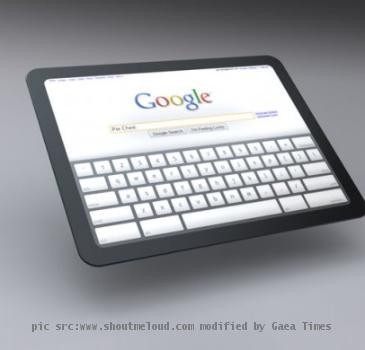Review: Garminfone gets you there, but not as stylish or feature-rich as other Android phones
By Rachel Metz, APWednesday, June 23, 2010
Review: Garminfone gets you there, but lacks style
ELDORADO NATIONAL FOREST, Calif. — If you’ve been eyeing a personal navigation device but wish it could make calls and surf the Web, the Garminfone may sound appealing.
And in some ways, it is. The device from Garmin Ltd., a leading maker of navigational devices, does double duty as a Garmin GPS unit and a smart phone that runs Google Inc.’s Android operating software. Born out of a partnership with Taiwan-based Asustek Computer Inc., the Garminfone is good at navigating as well as checking e-mail and Web surfing.
Still, at $200 from T-Mobile after a rebate and with two-year contract, the price is steep considering that the device doesn’t run one of the newest versions of Android — software you can get on flashier phones for the same price. That means you’d miss some features such as the ability to dictate e-mails and instant messages.
From the Garminfone’s bright, spacious touch screen — 3.5 inches diagonally — to its navigation-centric home screen, it’s clear that the Garminfone wants to help you get around.
It comes with a car charger and dashboard mount to make it even easier to find your way; that’s a plus compared with other phones running Android’s free Navigation software. It also offers a slew of options for customizing voices and finding your way that are not found in Navigation. And like the Android version, Garmin’s navigation service is free once you buy the phone.
The phone sports Garmin’s Breeze user interface, which presents three big touch-screen “buttons” that let you make phone calls, get directions or check out a map.
You can slide your finger from right to left to see all the different applications on the phone. If you hold your finger down on the little home icon below the screen, you’ll be able to flip through an additional five “screens” on which you can place application widgets for Facebook, your calendar and more. That’s similar to the multiple home-screen layout on other Android phones.
I tested the phone’s mapping skills on a camping trip with friends to Eldorado National Forest, a three-hour drive heading east from San Francisco.
I didn’t spend time playing around with the Garminfone’s voice settings, so we got the default navigation voice: a British man we soon began referring to as Geoffrey.
Geoffrey had no problem getting us to our campsite, though he failed to mention that the last few miles would be over a dirt road. He wasn’t that helpful when my friends wanted to find a nearby bar at 10 p.m. (not his fault, since apparently there weren’t many bars within 10 miles of our tent).
But the phone proved essential the next day when we wanted a list of all the In-N-Out Burger restaurants on the way home, and it did a good job of calculating our arrival time when we got slowed down by traffic.
On the way home from camping, Geoffrey’s tone seemed to grate on everyone in the car, but I didn’t have the patience to play around with the phone and figure out how to change it to a more soothing voice. Like mine, perhaps.
As it turns out, the Garminfone will let you do this through an included application called the Garmin Voice Studio. With this program, it took me about 10 minutes in a quiet room to record all 65 required words and phrases to my satisfaction.
It was a little creepy to hear me direct myself around town, and you’ll need to keep an eye at the phone’s screen if you use a customized voice since it doesn’t incorporate street names. Still, it is a nifty option.
Once you get where you’re going, you may want to take some pictures. But don’t count on the Garminfone’s simple 3-megapixel camera replacing your dedicated point-and-shoot. The resolution is not as good as what you can get on many other smart phones. Although photos I took in bright daylight looked fine, they were not so sharp when viewed at full size. And there’s no flash, just a series of lighting settings that you can use to try to adjust up your shots.
The Garminfone probably won’t replace your iPod, either. Sure, you can use it to play music or stream tunes from online radio service Pandora, but unlike most other current smart phones, it doesn’t have a standard headphone jack. Instead, it comes with an adaptor for the charging port on its bottom that will also turn headphones into a handsfree adaptor. For me, this is just one more cable I’m likely to lose track of.
That’s not to say that the Garminfone is a one-trick pony: It was surprisingly good at playing videos and quickly loaded most of the Web pages I wanted to see. Text and images look crisp on the large screen, and phone calls sounded fine. The phone comes with 4 gigabytes of storage, plus a 2-gigabyte microSD memory card.
Still, it seems kind of frumpy compared with other Android phones on the market that cost the same, such as the stylish and feature-bedecked Droid Incredible, which is sold by Verizon Wireless.
And because the Garminfone runs the older Android 1.6 — a decision T-Mobile attributed to the stability of that software — you won’t be able to take advantage of some of the latest Android features or download some applications that require a more recent operating software.
Hankering for a Garmin GPS unit that can also make calls and check e-mails? Then the Garminfone could be the one. If you care about substance and style, though, you may want to navigate toward another Android smart phone.
Tags: California, Communication Technology, Computing And Information Technology, Consumer Electronics, Eldorado National Forest, Global Positioning Systems, Gps Devices, Mobile Communications, North America, Software, United States



